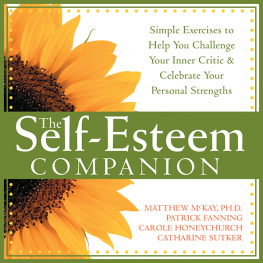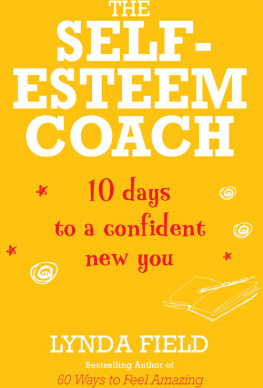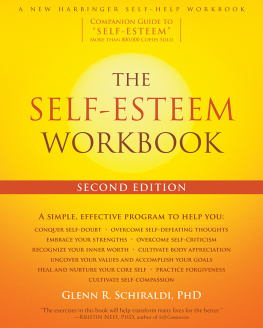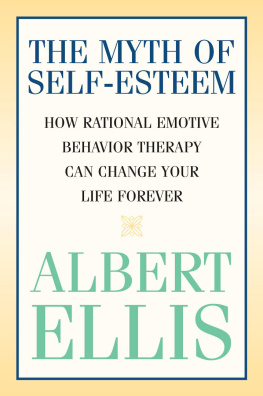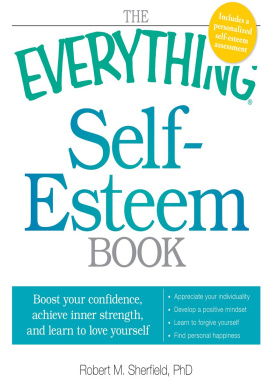ALSO BY NATHANIEL BRANDEN
HONORING THE SELF HOW TO RAISE YOUR SELF-ESTEEM
Available from Bantam Books
THE SIX PILLARS OF SELF-ESTEEM
THE SIX PILLARS OF SELF-ESTEEM
Nathaniel Branden
2011 Nathaniel Branden. All rights reserved.
Contents
To Devers Branden
My purpose in this book is to identify, in greater depth and comprehensiveness than in my previous writings, the most important factors on which self-esteem depends. If self-esteem is the health of the mind, then few subjects are of comparable urgency.
The turbulence of our times demands strong selves with a clear sense of identity, competence, and worth. With a breakdown of cultural consensus, an absence of worthy role models, little in the public arena to inspire our allegiance, and disorientingly rapid change a permanent feature of our lives, it is a dangerous moment in history not to know who we are or not to trust ourselves. The stability we cannot find in the world we must create within our own persons. To face life with low self-esteem is to be at a severe disadvantage. These considerations are part of my motivation in writing this book.
In essence, the book consists of my answers to four questions: What is self-esteem? Why is self-esteem important? What can we do to raise the level of our self-esteem? What role do others play in influencing our self-esteem?
Self-esteem is shaped by both internal and external factors. By internal I mean factors residing within, or generated by, the individualideas or beliefs, practices or behaviors. By external I mean factors in the environment: messages verbally or nonverbally transmitted, or experiences evoked, by parents, teachers, significant others, organizations, and culture. I examine self-esteem from the inside and the outside: What is the contribution of the individual to his or her self-esteem and what is the contribution of other people? To the best of my knowledge, no investigation of this scope has been attempted before.
When I published The Psychology of Self-Esteem in 1969, I told myself I had said everything I could say on this subject. In 1970, realizing that there were a few more issues I needed to address, I wrote Breaking Free. Then, in 1972, to fill in a few more gaps, I wrote The Disowned Self. After that, I told myself I was absolutely and totally finished with self-esteem and went on to write on other subjects. A decade or so passed, and I began to think about how much more I had personally experienced and learned about self-esteem since my first work, so I decided to write one last book about it; Honoring the Self was published in 1983. A couple of years later I thought it would be useful to write an action-oriented guide for individuals who wanted to work on their own self-esteemHow to Raise Your Self-Esteem, published in 1986. Surely I had finally finished with this subject, I told myself. But during this same period, the self-esteem movement exploded across the country; everyone was talking about self-esteem; books were written, lectures and conferences were givenand I was not enthusiastic about the quality of what was being presented to people. I found myself in some rather heated discussions with colleagues. While some of what was offered on self-esteem was excellent, I thought that a good deal was not. I realized how many issues I had not yet addressed, how many questions I needed to consider that I had not considered before, and how much I had carried in my head but never actually said or written. Above all, I saw the necessity of going far beyond my earlier work in spelling out the factors that create and sustain high or healthy self-esteem. (I use high and healthy interchangeably.) Once again, I found myself drawn back to examine new aspects of this inexhaustibly rich field of study, and to think my way down to deeper levels of understanding of what is, for me, the single most important psychological subject in the world.
I understood that what had begun so many years before as an interest, or even a fascination, had become a mission.
Speculating on the roots of this passion, I go back to my teenage years, to the time when emerging autonomy collided with pressure to conform. It is not easy to write objectively about that period, and I do not wish to suggest an arrogance I did not and do not feel. The truth is, as an adolescent I had an inarticulate but sacred sense of mission about my life. I had the conviction that nothing mattered more than retaining the ability to see the world through my own eyes. I thought that that was how everyone should feel. This perspective has never changed. I was acutely conscious of the pressures to adapt and to absorb the values of the tribefamily, community, and culture. It seemed to me that what was asked was the surrender of my judgment and also my conviction that my life and what I made of it was of the highest possible value. I saw my contemporaries surrendering and losing their fireand, sometimes in painful, lonely bewilderment, I wanted to understand why. Why was growing up equated with giving up? If my overriding drive since childhood was for understanding, another desire, hardly less intense, was forming but not yet fully conscious: the desire to communicate my understanding to the world; above all, to communicate my vision of life. It was years before I realized that, at the deepest level, I experienced myself as a teachera teacher of values. Underneath all my work, the core idea I wanted to teach was: Your life is important. Honor it. Fight for your highest possibilities.
I had my own struggles with self-esteem, and I give examples of them in this book. The full context is given in my memoir, Judgment Day. I shall not pretend that everything I know about self-esteem I learned from psychotherapy clients. Some of the most important things I learned came from thinking about my own mistakes and from noticing what I did that lowered or raised my own self-esteem. I write, in part, as a teacher to myself.
It would be foolish for me to declare that I have now written my final report on the psychology of self-esteem. But this book does feel like the climax of all the work that preceded it.
I first lectured on self-esteem and its impact on love, work, and the struggle for happiness in the late 1950s and published my first articles on the subject in the 1960s. The challenge then was to gain public understanding of its importance. Self-esteem was not yet an expression in widespread use. Today, the danger may be that the idea has become fashionable. It is on everyones tongue, which is not to say that it is better understood. Yet if we are unclear about its precise meaning and about the specific factors its successful attainment depends onif we are careless in our thinking, or succumb to the oversimplifications and sugar-coatings of pop psychologythen the subject will suffer a fate worse than being ignored. It will become trivialized. That is why, in Part I, we begin our inquiry into the sources of self-esteem with an examination of what self-esteem is and is not.
When I first began struggling with questions concerning self-esteem forty years ago, I saw the subject as providing invaluable clues to understanding motivation. It was 1954. I was twenty-four years of age, studying psychology at New York University, and with a small psychotherapy practice. Reflecting on the stories I heard from clients, I looked for a common denominator, and I was struck by the fact that whatever the persons particular complaint, there was always a deeper issue: a sense of inadequacy, of not being enough, a feeling of guilt or shame or inferiority, a clear lack of self-acceptance, self-trust, and self-love. In other words, a problem of self-esteem.
In his early writings Sigmund Freud suggested that neurotic symptoms could be understood either as direct expressions of anxiety or else as defenses against anxiety, which seemed to me to be a hypothesis of great profundity. Now I began to wonder if the complaints or symptoms I encountered could be understood either as direct expressions of inadequate self-esteem (for example, feelings of worthlessness, or extreme passivity, or a sense of futility) or else as defenses against inadequate self-esteem (for example, grandiose bragging and boasting, compulsive sexual acting-out, or overcontrolling social behavior). I continue to find this idea compelling. Where Freud thought in terms of
Next page



